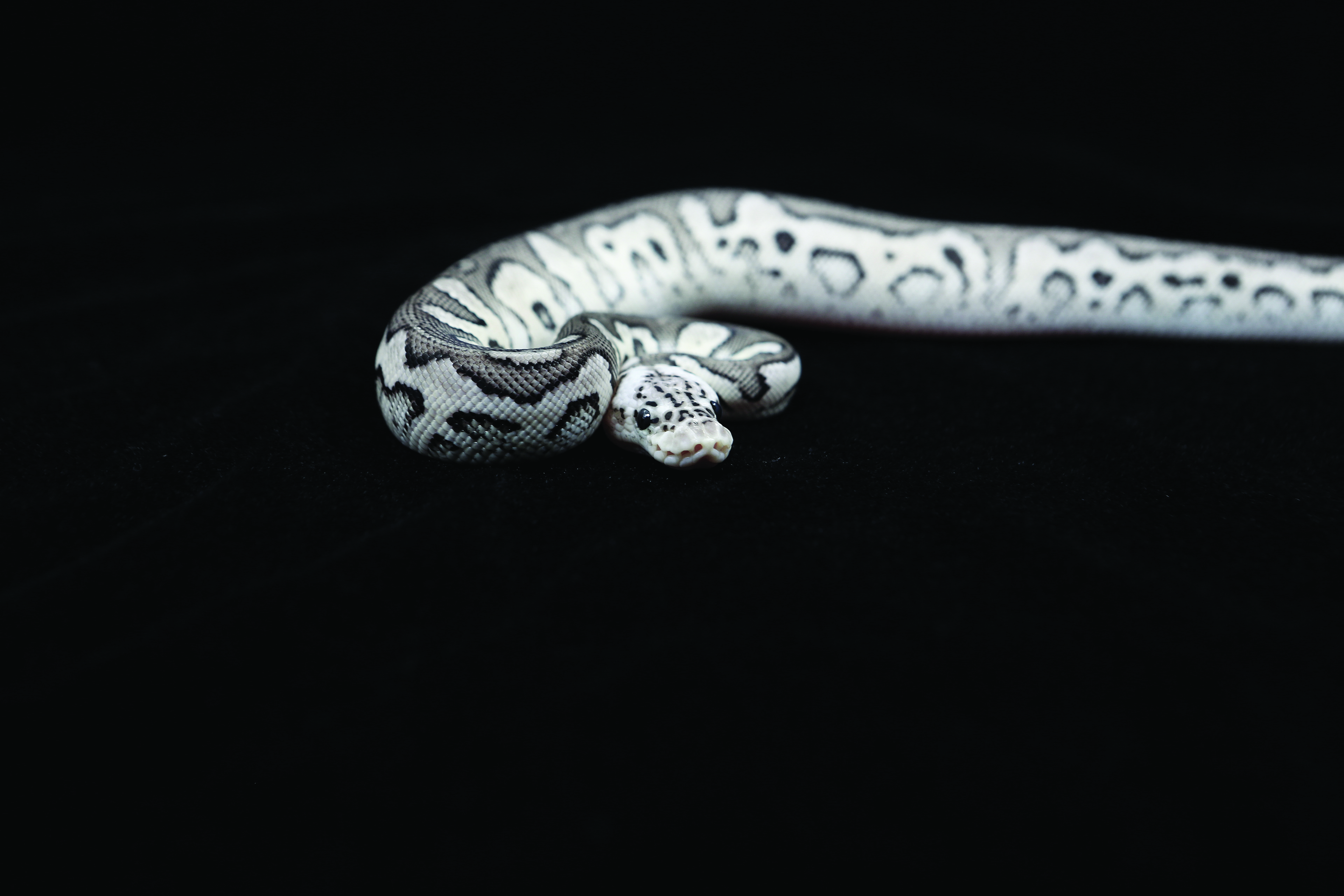But the Axanthic Pewter Clown ball python morph also represents the fulfillment of a dream for our resident reptile expert and breeder Pitlair. “As far as I am aware, this combination is the first in the world,” he says.
Let’s refresh: what is a morph, exactly? From a previous interview, Pitlair explains, “It is a color or pattern that can consistently be passed on to the ball python’s offspring. If it is an inheritable trait, then it is correct to say that that defining color or pattern that can be passed on is a morph.”

Roll the Dice and be Patient
Even with all the color and pattern combinations considered, however, creating a morph is still a game of chance, like all genetics. Morphs can be dominant, co-dominant, or recessive. Dominant morphs, as the name suggests, will produce the same look whether the ball python inherits it from only one or both of its parents.
Co-dominant or incomplete morphs, such as pastel or Mojave, have one appearance when inherited from only one parent, and a different appearance when it inherits the gene from both parents.
Finally, many morphs are recessive, and require the gene to be inherited from both of the snake’s parents before it can produce a visually distinctive appearance.
It takes years for aspiring breeders to come up with a new morph. “Typically an unusual-looking specimen (with a new color or pattern) can be found in batches of wild-caught ball pythons,” says Pitlair. “But before any breeder can claim it to be a new morph and give it a name, the breeder must be able to consistently show that the defining trait of this unusual ball python can be passed on to its offspring.”
Even the sex of the unusual specimen is a big factor. Pitlair says, “If you have a male, then in about a year’s time you could, with some certainty, have a possible new morph.” It takes males at least one and a half years to become sexually active, and females at least two and a half years, although Pitlair says three years is ideal. The females also need to be in good health, and weigh at least 1.5 kilograms (kg).“There are cases of projects lasting up to ten years before something comes to light,” he warns. “Luck really plays a big part in this.”
Perfect Combinations, the Foundation of Success
“One does not need to exclusively use recessive genes in order to produce a new, desirable look,” Pitlair says. “A combination of dominate and incomplete morphs can also produce beautiful-looking ball pythons.”
The Axanthic Pewter Clown ball python features both recessive (axanthic and clown) and co-dominant (cinnamon and pastel) genes. Pitlair explains, “Axanthic is the absence of yellow, which results in a gray, black, and white snake. Clown in a pattern morph with a winding dorsal strip. Then we add cinnamon, which is a color and pattern morph, and pastel as a light color morph.” The results certainly speak for themselves.
Pitlair is particularly proud of his breeding achievement. “We, as hobbyists, feel a great sense of accomplishment from having been able to produce this particular combination. This also means that we can be ahead of other people when coming up with even more new combinations based on this current one. Lastly, these combinations have a relatively high monetary value.”
This story appeared in Animal Scene’s April 2017 issue.






